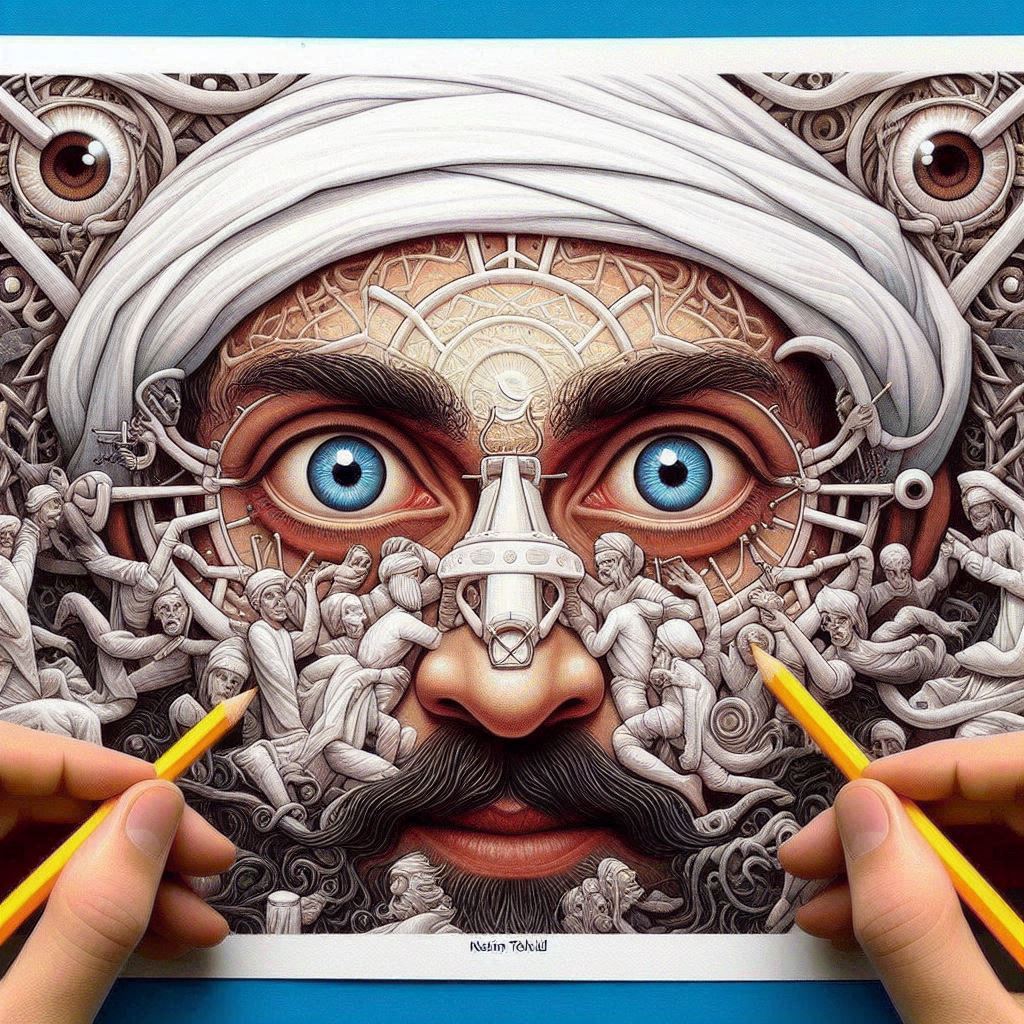 دیدن یک اثر هنری تنها یک تجربهی بصری ساده نیست؛ بلکه نتیجهی پیچیدهای از تعامل نور، فیزیک و عملکرد چشم انسان است. هر تصویر هنری که مشاهده میکنیم، در واقع بازتابی از چگونگی رفتار نور و تأثیر آن بر ادراک بصری ماست. این مقاله بررسی میکند که چگونه قوانین فیزیکی نور باعث زنده شدن تصاویر هنری میشوند و چگونه هنرمندان از این اصول برای خلق آثار خیرهکننده بهره میبرند.
دیدن یک اثر هنری تنها یک تجربهی بصری ساده نیست؛ بلکه نتیجهی پیچیدهای از تعامل نور، فیزیک و عملکرد چشم انسان است. هر تصویر هنری که مشاهده میکنیم، در واقع بازتابی از چگونگی رفتار نور و تأثیر آن بر ادراک بصری ماست. این مقاله بررسی میکند که چگونه قوانین فیزیکی نور باعث زنده شدن تصاویر هنری میشوند و چگونه هنرمندان از این اصول برای خلق آثار خیرهکننده بهره میبرند.
۱. نور و نقش آن در ادراک بصری
نور به عنوان یک موج الکترومغناطیسی، در مسیرهای مختلف حرکت کرده و هنگام برخورد با اشیا، بازتاب، شکست و پراکندگی را تجربه میکند. چشم انسان به واسطهی گیرندههای نوری خود، نور بازتابشده از سطوح مختلف را دریافت کرده و مغز این اطلاعات را به عنوان رنگها و اشکال مختلف تفسیر میکند. بدون نور، هیچ تصویری قابل مشاهده نیست و به همین دلیل، درک هنری ما کاملاً به فیزیک نور وابسته است.
۲. تأثیر انعکاس و شکست نور در آثار هنری
- انعکاس نور: یکی از مهمترین تکنیکهای مورد استفاده در نقاشی و عکاسی، انعکاس نور است که برای ایجاد عمق و تأثیرگذاری بیشتر در تصویر به کار میرود.
- شکست نور: وقتی نور از یک محیط شفاف به محیط دیگری وارد میشود، تغییر مسیر میدهد. این پدیده در طراحی شیشهها، آب و حتی جلوههای خاص در نقاشی مورد استفاده قرار میگیرد.
۳. رنگها و تأثیر فیزیکی آنها در هنر
رنگهایی که در آثار هنری مشاهده میکنیم، نتیجهی طولموجهای مختلف نور هستند. برای مثال، اشیایی که به رنگ قرمز دیده میشوند، در واقع طولموجهای قرمز را منعکس کرده و بقیه را جذب میکنند. این موضوع به هنرمندان کمک میکند تا با انتخاب هوشمندانهی رنگها، جلوههایی متناسب با احساسات و پیام موردنظر خود ایجاد کنند.
۴. سایهها و روشنایی در هنر
نور علاوه بر ایجاد رنگها، باعث تشکیل سایهها نیز میشود. تغییرات شدت نور در یک صحنه، میتواند حس عمق و بُعد را تقویت کند. در طراحیهای واقعگرایانه، شناخت درست نحوهی تشکیل سایهها و میزان کنتراست نور، به هنرمند کمک میکند تا تصاویری زنده و واقعیتر خلق کند.
فیزیک نور نقش اساسی در درک هنری ما دارد و بدون آن، تصاویر هنری فاقد بُعد، رنگ و حس زنده بودن خواهند بود. هنرمندان با استفاده از تکنیکهای علمی نورپردازی و شناخت ویژگیهای نوری، میتوانند آثاری خلق کنند که نه تنها چشمنواز بلکه علمی و دقیق باشند.
The Human Eye and Art: How the Physics of Light Brings Artistic Images to Life
Viewing an artwork is not just a simple visual experience—it is a complex interaction of light, physics, and the human eye. Every piece of art we see is a result of how light behaves and influences our visual perception. This article explores how the fundamental principles of light physics make artistic images come to life and how artists use these principles to create stunning masterpieces.
1. Light and Its Role in Visual Perception
Light, as an electromagnetic wave, moves through different paths, experiencing reflection, refraction, and dispersion when interacting with objects. The human eye captures reflected light through specialized receptors, and the brain interprets these signals as colors and shapes. Without light, no image would be visible, making our artistic perception entirely dependent on light physics.
2. The Impact of Reflection and Refraction in Art
- Reflection of Light: One of the key techniques in painting and photography is the use of light reflection to create depth and realism in images.
- Refraction of Light: When light moves from one transparent medium to another, it bends. This phenomenon is widely used in glass, water, and even special effects in paintings.
3. Colors and Their Physical Influence on Art
The colors we see in art result from different wavelengths of light. For example, an object appears red because it reflects red wavelengths while absorbing others. Understanding these principles allows artists to create color schemes that enhance emotions and convey specific messages.
4. Shadows and Light in Artistic Composition
Besides generating colors, light also creates shadows. Variations in light intensity within a scene can enhance the sense of depth and three-dimensionality. In realistic art, mastering the formation of shadows and light contrast enables artists to create lifelike and dynamic images.
The physics of light plays an essential role in artistic perception. Without it, artistic images would lack depth, color, and vitality. By using scientific lighting techniques and understanding optical principles, artists can craft artworks that are not only visually stunning but also scientifically precise.
- ۰ نظر
- ۱۵ بهمن ۰۳ ، ۱۶:۰۴
